Search
- Page Path
-
- HOME
- Search
- Original Article
- High-dose methylprednisolone and tocilizumab improve survival of patients with high-risk pediatric acute necrotizing encephalopathy
- Chaonan Fan, Fei Li, Kechun Li, Zheng Li, Yiyang Mao, Lijuan Wang, Gang Liu, Yingchao Liu, Quan Wang, Suyun Qian
-
Background: Acute necrotizing encephalopathy (ANE) is a rare but devastating neurological disorder in children that is typically triggered by viral infections such as influenza, sudden acute respiratory syndrome coronavirus 2, and human herpesvirus-6. ANE is characterized by cytokine storm and associated with high mortality; however, optimal immunomodulatory strategies remain undefined.
Purpose: To evaluate the effectiveness of multiple immunomodulatory strategies, including high-dose methylprednisolone (MP), plasma exchange (PLEX), and tocilizumab, at reducing short-term... -
DOI: https://doi.org/10.3345/cep.2025.01431 [Accepted]
- Comparative analysis of goal attainment for helmet therapy versus conservative management for positional plagiocephaly in infants
- Bjoern Vogt, Ariane Deutschle, Georg Gosheger, Adrien Frommer, Andrea Laufer, Henning Tretow, Robert Roedl, Gregor Toporowski
-
Background: Positional plagiocephaly (PP) is a common cranial asymmetry of infancy. Its treatment options include conservative management and helmet therapy. However, the efficacy of each, particularly at achieving a normal cranial shape, remains uncertain.
Purpose: This study aimed to compare the efficacy of conservative management and helmet therapy for PP. Methods: We retrospectively analyzed 199 infants with PP treated in 2015–2024. A... -
DOI: https://doi.org/10.3345/cep.2025.01102 [Epub ahead of print]
- Review Article
- Bridging the gap: autism spectrum disorder in children in the United States and worldwide: a narrative review
- Sandhya J. Kadam, Malika Goel
-
Autism spectrum disorder (ASD) is a neurodevelopmental condition characterized by difficulty with communication and social interactions as well as restricted or repetitive behaviors. Over the last few decades, the prevalence of ASD has increased globally, with major differences in reporting, diagnosis, and interventions between developed and developing countries. The United States (U.S.) has seen a sharp rise in diagnosed ASD... -
DOI: https://doi.org/10.3345/cep.2025.00969 [Epub ahead of print]
- Original Article
- Other
- Role of neutrophil elastase in predicting infection among children with chemotherapy-induced febrile neutropenia
- Mahmoud A. El-Hawy, Doaa M. Elian, Mai El-Sayad Abd El-Hamid, Esraa T. Allam, Mariam S. Kandeel, Asmaa A. Mahmoud
- Clin Exp Pediatr. 2025;68(10):801-807. Published online June 10, 2025
-
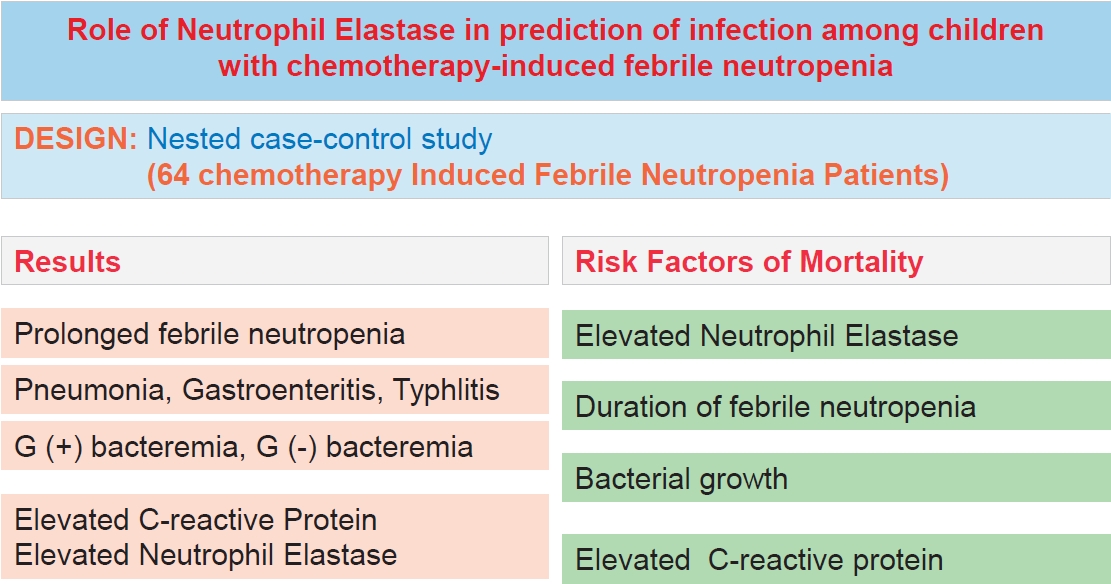
Question: Can neutrophil elastase (NE) levels predict infection— the primary cause of mortality—among children with hematological malignancies and febrile neutropenia (FN)?
Finding: Elevated levels of NE were found in children with chemotherapy-induced FN and a bacterial infection.
Meaning: Increased NE levels and prolonged FN are important factors associated with mortality risk.
- Hematology
- Hematopoietic stem cell transplantation in pediatric patients with type VI mucopolysaccharidosis
- Vedat Uygun, Koray Yalçın, Hayriye Daloğlu, Seda Öztürkmen, Suna Çelen, Suleimen Zhumatayev, Gülsün Karasu, Akif Yeşilipek
- Clin Exp Pediatr. 2025;68(8):601-607. Published online March 11, 2025
-
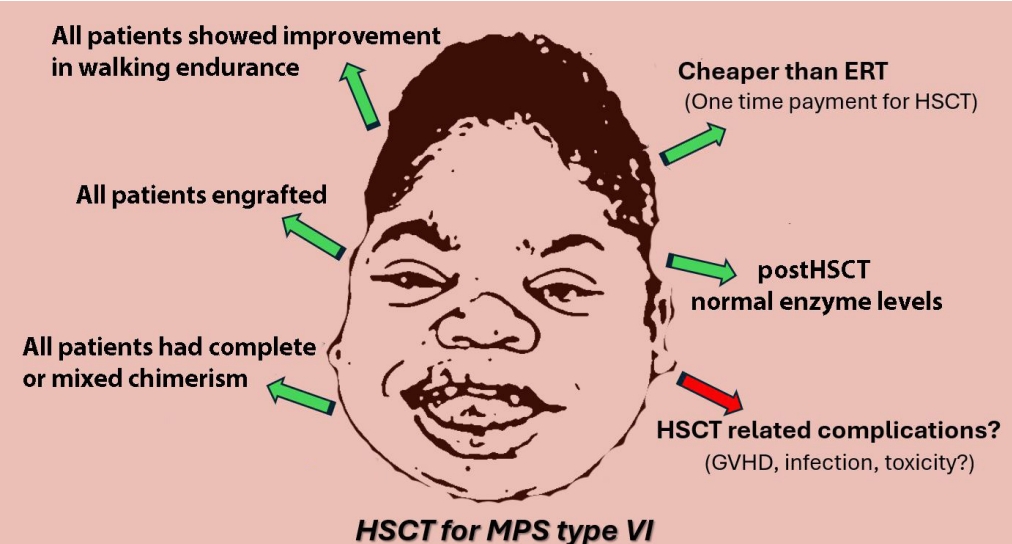
Question: Could hematopoietic stem cell transplantation (HSCT) be an alternative to enzyme replacement therapy (ERT) for type VI mucopolysaccharidosis (MPS VI)?
Finding: HSCT is generally not offered due to reports of high toxicity and mortality. However, we detected fewer complications and graft-versus-host disease cases and no deaths with HSCT.
Meaning: HSCT is both less expensive than ERT and permanent; thus, it should be considered an alternative treatment for MPS VI.
- Neonatology (Perinatology)
- Evaluation of total serum bilirubin thresholds for discontinuing phototherapy in jaundiced neonates: a randomized study
- Ajay Kumar, Nidhi Jain
- Clin Exp Pediatr. 2025;68(7):539-545. Published online February 26, 2025
-

Question: What are the outcomes of jaundiced neonates when phototherapy is discontinued at 2 different total serum bilirubin (TSB) thresholds?
Findings: The study involved 80 neonates, comparing a recommended TSB threshold and a lower threshold for phototherapy discontinuation. Results showed a 14.3% reinstitution rate of treatment, with no adverse outcomes.
Meaning: Careful posttreatment monitoring is essential when discontinuing phototherapy, and future research should consider updated guidelines like those from the American Academy of Pediatrics.
- Review Article
- Critical Care Medicine
- Protocolized sedation may reduce ventilation and sedation requirements in the pediatric intensive care unit: a systematic review and meta-analysis
- Ambrus Szemere, Alíz Fazekas, Anna Réka Sebestyén, Rani Ezzeddine, Veronika Upor, Marie Anne Engh, Péter Hegyi, Zsolt Molnár, Klára Horváth
- Clin Exp Pediatr. 2025;68(6):406-416. Published online February 19, 2025
-
Protocolized sedation may reduce ventilation requirements, pediatric intensive care unit length of stay, and sedative exposure. However, it may increase the likelihood of unplanned extubation, highlighting the importance of incorporating preventive measures to mitigate this risk.
- Original Article
- Pulmonology
- Efficacies of different treatment strategies for infants hospitalized with acute bronchiolitis
- Hyeri Jeong, Dawon Park, Eun Kyo Ha, Ju Hee Kim, Jeewon Shin, Hey-Sung Baek, Hyunsoo Hwang, Youn Ho Shin, Hye Mi Jee, Man Yong Han
- Clin Exp Pediatr. 2024;67(11):608-618. Published online October 28, 2024
-

· This study analyzed 45 randomized controlled trials (5,061 participants, 13 interventions) of the comparative efficacies of treatments for acute bronchiolitis in infants.
· Inhalation therapy with epinephrine and hypertonic saline significantly reduced the length of hospital stay compared with normal saline.
· Hypertonic saline had the greatest ability to improve the clinical severity score of bronchiolitis in infants younger than 2 years of age.
- Review Article
- Endocrinology
- Growth plate closure and therapeutic interventions
- Ja Hyang Cho, Hae Woon Jung, Kye Shik Shim
- Clin Exp Pediatr. 2024;67(11):553-559. Published online October 28, 2024
-

Height gains result from longitudinal bone growth. Upon adequate growth, growth plate closure limits longitudinal bone growth. To date, gonadotropin-releasing hormone analogs, aromatase inhibitors, C-type natriuretic peptide analogs, and fibroblast growth factor receptor 3 inhibitors have been studied or used as therapeutic interventions to delay growth plate closure and increase human height. The development of more effective therapeutic modalities for short stature, precocious puberty, and skeletal dysplasia is anticipated.
- Allergy
- Recent advances in food allergen immunotherapy
- You Hoon Jeon, Edwin H. Kim
- Clin Exp Pediatr. 2024;67(8):386-394. Published online December 7, 2023
-

· To enhance the safety of food allergen immunotherapy, alternative approaches such as sublingual immunotherapy, epicutaneous immunotherapy, low-dose oral immunotherapy (OIT), and omalizumab with OIT are being explored.
· Factors such as causative allergen type, natural outgrowth, symptom severity, and patient age should be considered.
· Individualized food allergen immunotherapy plans should be established to determine the most beneficial treatment for each patient.
- Original Article
- Neurology
- Effectiveness of Helmet therapy for infants with moderate to severe positional plagiocephaly
- Jeongho Kim, Jina Kim, Kyu Young Chae
- Clin Exp Pediatr. 2024;67(1):46-53. Published online December 5, 2023
-

Question: Is helmet therapy effective for positional plagiocephaly? What factors influence helmet therapy efficacy for positional plagiocephaly?
Finding: Helmet therapy is effective for infants with moderate to severe positional plagiocephaly, and its effectiveness is influenced by age at treatment initiation, severity of head asymmetry, and daily duration of helmet wear.
Meaning: Pediatricians should initiate helmet therapy for positional plagiocephaly sooner, ideally before 9 months of age, to maximize treatment efficacy.
- Review Article
- Allergy
- Practical issues of oral immunotherapy for egg or milk allergy
- Sukyung Kim, Kangmo Ahn, Jihyun Kim
- Clin Exp Pediatr. 2024;67(3):140-148. Published online June 19, 2023
-
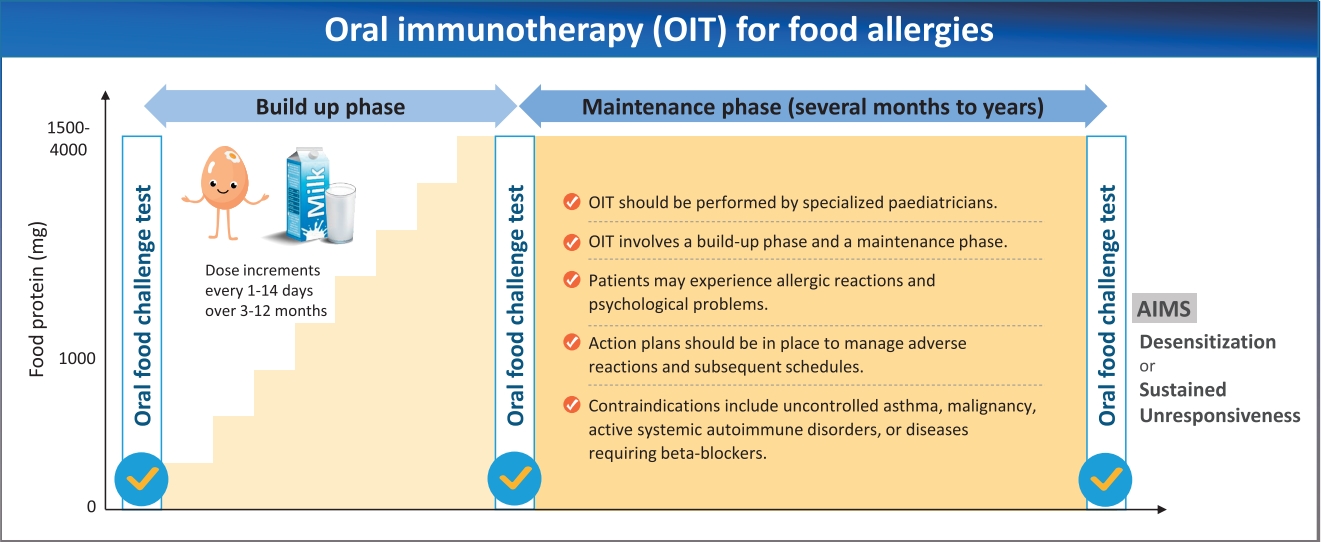
· Oral immunotherapy should be supervised by pediatricians with experience administering oral food challenge tests and managing allergic reactions.
· Food allergen intake is gradually increased and maintained for years.
· Patients may experience allergic reactions and psychological problems.
· Adjunctive therapies (biologics, antihistamines, and leukotriene receptor antagonists) may improve efficacy and safety.
· Contraindications include uncontrolled asthma, malignancy, active autoimmune disorders, and beta-blocker usage.
- New approaches to immunotherapy in house dust mite allergy
- In Sik Kim
- Clin Exp Pediatr. 2023;66(4):161-168. Published online October 25, 2022
-
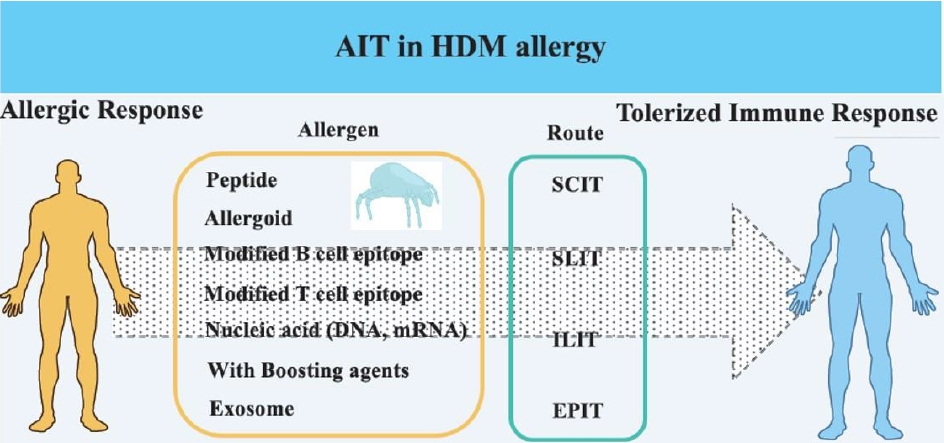
Allergen immunotherapy (AIT) has developed over the last few decades and has emerged as a promising treatment. House dust mite (HDM) is a target allergen in AIT, and various modified HDM allergens have been improved for their efficacy. Moreover, clinical trials have proved their significantly therapeutic effects in allergy. This article review focuses on HDM allergens developed for AIT efficacy,...
- Original Article
- Oncology
- Treatment outcomes of high-dose chemotherapy plus stem cell rescue in high-risk neuroblastoma patients in Thailand
- Kunanya Suwannaying, Piti Techavichit, Patcharee Komvilaisak, Napat Laoaroon, Nattee Narkbunnam, Kleebsabai Sanpakit, Kanhatai Chiengthong, Thirachit Chotsampancharoen, Lalita Sathitsamitphong, Chalongpon Santong, Panya Seksarn, Suradej Hongeng, Surapon Wiangnon
- Clin Exp Pediatr. 2022;65(9):453-458. Published online May 24, 2022
-

Question: This study aimed to elucidate the outcomes of high-risk neuroblastoma (HR-NB) patients treated with high-dose chemotherapy and stem cell rescue without immunotherapy.
Finding: The 5-year overall survival and event-free survival rates were 45.1% and 40.4%, respectively.
Meaning: High-dose chemotherapy plus stem cell rescue followed by cis-retinoic acid for 12 months is well tolerated and could improve survival in patients with HR-NB in limited resource settings.
- Neonatology (Perinatology)
- Comparison of minimally invasive surfactant therapy with intubation surfactant administration and extubation for treating preterm infants with respiratory distress syndrome: a randomized clinical trial
- Mohammad Kazem Sabzehei, Behnaz Basiri, Maryam Shokouhi, Sajad Ghahremani, Ali Moradi
- Clin Exp Pediatr. 2022;65(4):188-193. Published online July 28, 2021
-

Question: Are the short-term outcomes of minimally invasive surfactant therapy (MIST) relatively superior to those of INtubation, SURfactant administration, and Extubation (INSURE) in preterm infants with respiratory distress syndrome (RDS)?
Finding: MIST could be an appropriate substitution for INSURE in preterm infants with RDS since it reduced hospitalization time and number of side effects.
Meaning: MIST is recommended for surfactant administration for its proven advantages over the INSURE technique.
- Review Article
- Neurology
- Autoimmune encephalitis and epilepsy: evolving definition and clinical spectrum
- Joo Hee Seo, Yun-Jin Lee, Ki Hyeong Lee, Elakkat Gireesh, Holly Skinner, Michael Westerveld
- Clin Exp Pediatr. 2020;63(8):291-300. Published online August 16, 2019
-
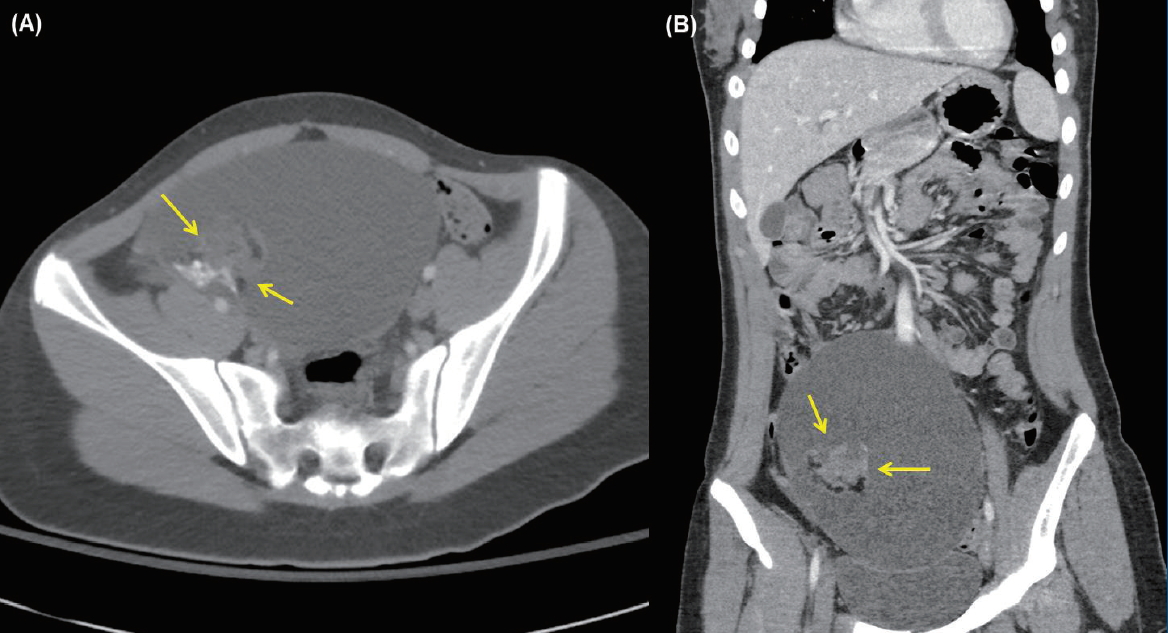
Advances in autoimmune encephalitis studies in the past 10 years have led to the identification of new syndromes and biomarkers that have transformed the diagnostic approach to the disorder. The disorder or syndrome has been linked to a wide variety of pathologic processes associated with the neuron-specific autoantibodies targeting intracellular and plasma membrane antigens. However, current criteria for autoimmune encephalitis...
- Nephrology (Genitourinary)
- Renal replacement therapy in neonates with an inborn error of metabolism
- Heeyeon Cho
- Clin Exp Pediatr. 2019;62(2):43-47. Published online November 7, 2018
-

Hyperammonemia can be caused by several genetic inborn errors of metabolism including urea cycle defects, organic acidemias, fatty acid oxidation defects, and certain disorders of amino acid metabolism. High levels of ammonia are extremely neurotoxic, leading to astrocyte swelling, brain edema, coma, severe disability, and even death. Thus, emergency treatment for hyperammonemia must be initiated before a precise diagnosis is...
- Acute kidney injury and continuous renal replacement therapy in children; what pediatricians need to know
- Myung Hyun Cho, Hee Gyung Kang
- Clin Exp Pediatr. 2018;61(11):339-347. Published online October 23, 2018
-
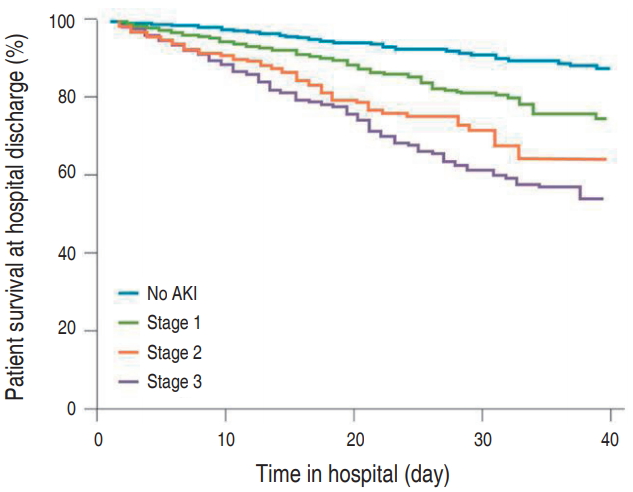
Acute kidney injury (AKI) is characterized by abrupt deterioration of renal function, and its diagnosis relies on creatinine measurements and urine output. AKI is associated with higher morbidity and mortality, and is a risk factor for development of chronic kidney disease. There is no proven medication for AKI. Therefore, prevention and early detection are important. Physicians should be aware of...
- Original Article
- Genetics and Metabolism
- Clinical and molecular characterization of Korean children with infantile and late-onset Pompe disease: 10 years of experience with enzyme replacement therapy at a single center
- Min-Sun Kim, Ari Song, Minji Im, June Huh, I-Seok Kang, Jinyoung Song, Aram Yang, Jinsup Kim, Eun-Kyung Kwon, Eu-Jin Choi, Sun-Ju Han, Hyung-Doo Park, Sung Yoon Cho, Dong-Kyu Jin
- Clin Exp Pediatr. 2019;62(6):224-234. Published online October 4, 2018
-

Purpose: Pompe disease (PD) is an autosomal recessive disorder caused by a deficiency of acid alphaglucosidase resulting from pathogenic GAA variants. This study describes the clinical features, genotypes, changes before and after enzyme replacement therapy (ERT), and long-term outcomes in patients with infantile-onset PD (IOPD) and late-onset PD (LOPD) at a tertiary medical center. Methods: The medical records of 5 Korean...
- Review Article
- Nephrology (Genitourinary)
- Atypical hemolytic uremic syndrome and eculizumab therapy in children
- Seong Heon Kim, Hye Young Kim, Su Young Kim
- Clin Exp Pediatr. 2018;61(2):37-42. Published online February 28, 2018
-
Hemolytic uremic syndrome (HUS) is often encountered in children with acute kidney injury. Besides the well-known shiga toxin-producing
Escherichia coli -associated HUS, atypical HUS (aHUS) caused by genetic complement dysregulation has been studied recently. aHUS is a rare, chronic, and devastating disorder that progressively damages systemic organs, resulting in stroke, end-stage renal disease, and death. The traditional treatment for aHUS is...
- Case Report
- Oncology
- Relapsed Wilms' tumor with multiple brain metastasis
- Akın Akakın, Baran Yılmaz, Murat Şakir Ekşi, Özlem Yapıcıer, Türker Kılıç
- Clin Exp Pediatr. 2016;59(Suppl 1):S96-S98. Published online November 30, 2016
-
Wilms' tumor is the most common malignant renal tumor in childhood. The brain metastasis of a Wilms' tumor with anaplastic histopathology is rare. We present the case of an 8-year-old girl with Wilms' tumor, who presented with multiple brain metastases 5 years after her primary diagnosis. The brain masses were diagnosed after a generalized tonic-clonic seizure attack. The big solid...
- Esthesioneuroblastoma in a boy with 47, XYY karyotype
- Hee Cheol Jo, Seong Wook Lee, Hyun Joo Jung, Jun Eun Park
- Clin Exp Pediatr. 2016;59(Suppl 1):S92-S95. Published online November 30, 2016
-
Neuroblastomas are sometimes associated with abnormal constitutional karyotypes, but the XYY karyotype has been rarely described in neuroblastomas. Here, we report a case of an esthesioneuroblastoma in a boy with a 47, XYY karyotype. A 6-year-old boy was admitted to our hospital because of nasal obstruction and palpable cervical lymph node, which he first noticed several days previously. A polypoid...
- Original Article
- Cardiology
- Clinical outcome of patients with refractory Kawasaki disease based on treatment modalities
- Hyun Jung Kim, Hyo Eun Lee, Jae Won Yu, Hong Ryang Kil
- Clin Exp Pediatr. 2016;59(8):328-334. Published online August 24, 2016
-
Purpose Although a significant number of reports on new therapeutic options for refractory Kawasaki disease (KD) such as steroid, infliximab, or repeated intravenous immunoglobulin (IVIG) are available, their effectiveness in reducing the prevalence of coronary artery lesions (CAL) remains controversial. This study aimed to define the clinical characteristics of patients with refractory KD and to assess the effects of adjuvant therapy...
- Review Article
- Allergy
- A practical view of immunotherapy for food allergy
- Tae Won Song
- Clin Exp Pediatr. 2016;59(2):47-53. Published online February 29, 2016
-
Food allergy is common and sometimes life threatening for Korean children. The current standard treatment of allergen avoidance and self-injectable epinephrine does not change the natural course of food allergy. Recently, oral, sublingual, and epicutaneous immunotherapies have been studied for their effectiveness against food allergy. While various rates of desensitization (36% to 100%) and tolerance (28% to 75%) have been...
- Case Report
- Alveolar rhabdomyosarcoma with massive disseminated intravascular coagulopathy treated with systemic chemotherapy
- Byung Gyu Yoon, Hee Jo Baek, Burm Seok Oh, Dong Kyun Han, Yoo Duk Choi, Hoon Kook
- Clin Exp Pediatr. 2015;58(12):505-508. Published online December 22, 2015
-
It is uncommon for pediatric patients with rhabdomyosarcoma to present with clinical and/or laboratory features of disseminated intravascular coagulation (DIC). We report a case of metastatic alveolar rhabdomyosarcoma with severe bleeding because of DIC in a 13-year-old boy. He experienced persistent oozing at the site of a previous operation, gross hematuria, and massive epistaxis. Two weeks after initiating combination chemotherapy...
- Original Article
- Initial steroid regimen in idiopathic nephrotic syndrome can be shortened based on duration to first remission
- Hee Sun Baek, Ki-Soo Park, Hee Gyung Kang, Cheol Woo Ko, Min Hyun Cho
- Clin Exp Pediatr. 2015;58(6):206-210. Published online June 22, 2015
-
Purpose The use of a 12-week steroid regimen (long-term therapy, LT) for the first episode of idiopathic nephrotic syndrome (NS) reportedly induces a more sustained remission and lower relapse rate than previous regimens, including an 8-week steroid regimen (short-term therapy, ST). Here, we assessed the potential for selective application of 2 steroid regimens (LT vs. ST) based on the days to...
- Ten years of experience in the prevention of mother-to-child human immunodeficiency virus transmission in a university teaching hospital
- Jung-Weon Park, Tae-Whan Yang, Yun-Kyung Kim, Byung-Min Choi, Hai-Joong Kim, Dae-Won Park
- Clin Exp Pediatr. 2014;57(3):117-124. Published online March 31, 2014
-
Purpose Administration of antiretroviral drugs to mothers and infants significantly decreases mother-to-child human immunodeficiency virus (HIV) transmission; cesarean sections and discouraging breastfeeding further decreases this risk. The present study confirmed the HIV status of babies born to mothers infected with HIV and describes the characteristics of babies and mothers who received preventive treatment.
Methods This study retrospectively analyzed medical records of nine infants...
- Review Article
- Clinical utilization of cord blood over human health: experience of stem cell transplantation and cell therapy using cord blood in Korea
- Young-Ho Lee
- Clin Exp Pediatr. 2014;57(3):110-116. Published online March 31, 2014
-
Cord blood (CB) has been used as an important and ethical source for hematopoietic stem cell transplantation (SCT) as well as cell therapy by manufacturing mesenchymal stem cell, induced pleuripotential stem cell or just isolating mononuclear cell from CB. Recently, the application of cell-based therapy using CB has expanded its clinical utility, particularly, by using autologous CB in children with...
- Antibiotics resistance of
Helicobacter pylori and treatment modalities in children withH. pylori infection - Ji-Hyun Seo, Hyang-Ok Woo, Hee-Shang Youn, Kwang-Ho Rhee
- Clin Exp Pediatr. 2014;57(2):67-71. Published online February 24, 2014
-
Pediatric infection with
Helicobacter pylori may occur early in childhood and persist lifelong. Global pediatric clinical studies have reported a decreasing tendency in the overall rate ofH. pylori eradication. In pediatric patients withH. pylori infection, pediatric patients with peptic ulcer, and the first-degree relatives of patients with a history of gastric cancer, it is commonly recommended thatH....
- Mechanisms of immune tolerance to allergens in children
- Umut C. Kucuksezer, Cevdet Ozdemir, Mübeccel Akdis, Cezmi A. Akdis
- Clin Exp Pediatr. 2013;56(12):505-513. Published online December 20, 2013
-
Because the prevalence of allergic diseases has significantly increased in recent years, understanding the causes and mechanisms of these disorders is of high importance, and intense investigations are ongoing. Current knowledge pinpoints immune tolerance mechanisms as indispensable for healthy immune response to allergens in daily life. It is evident that development and maintenance of allergens-pecific T cell tolerance is of...
-

-
-
6.02024CiteScore98th percentilePowered by
-
Impact Factor3.6
-
- TOPICS
- ARTICLE CATEGORY
- Editorial Office
-
Korean Pediatric Society
#1606 Seocho World Officetel, 19 Seoun-ro, Seocho-ku, Seoul 06732, Korea
Tel: +82-2-3473-7306 Fax: +82-2-3473-7307 E-mail: office@e-cep.org
Clinical and Experimental Pediatrics is an open access journal. All articles are distributed under the terms of the Creative Commons Attribution NonCommercial License (http://creativecommons.org/licenses/by-nc/4.0/)
Copyright © 2025 by Korean Pediatric Society.











